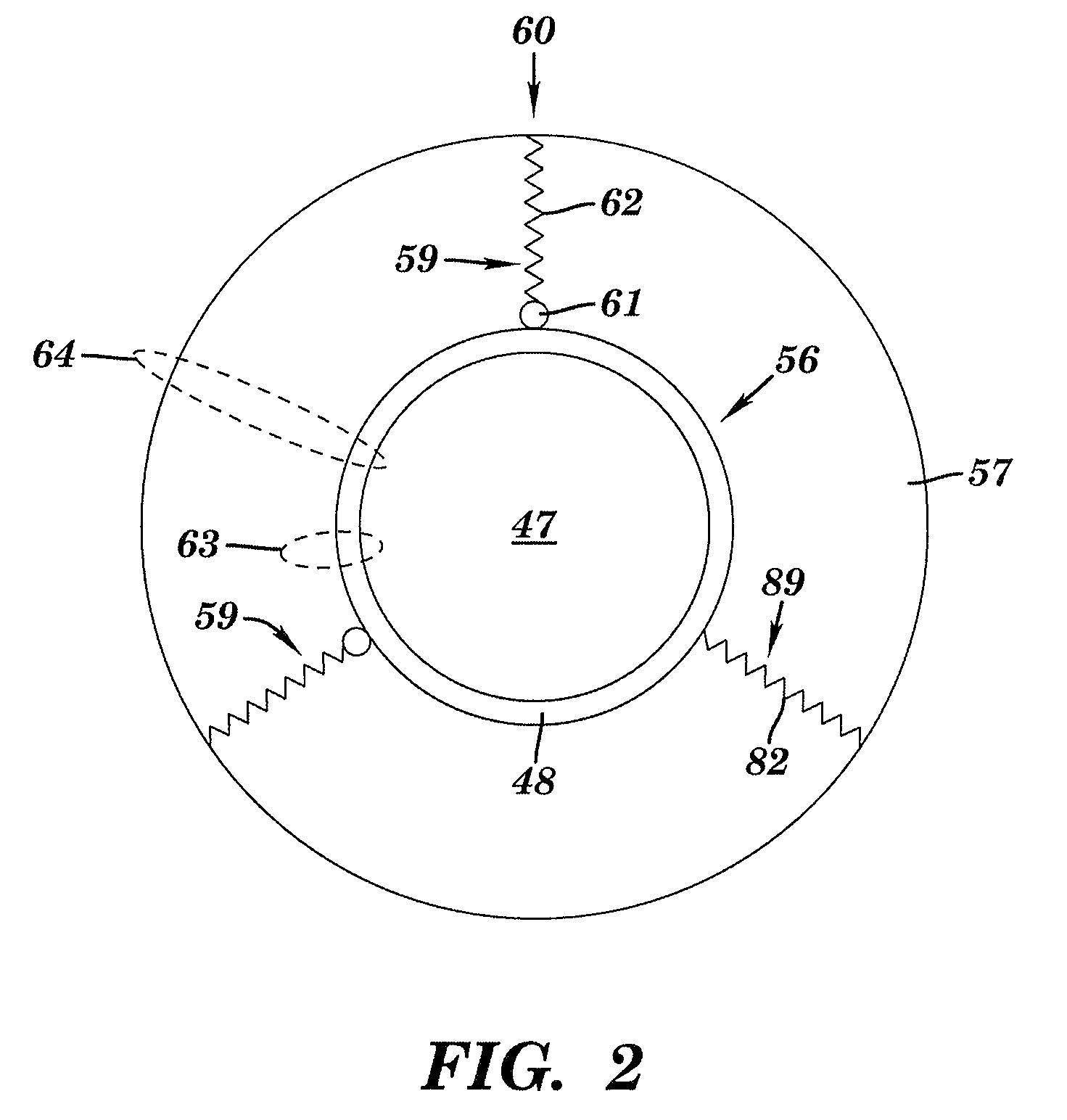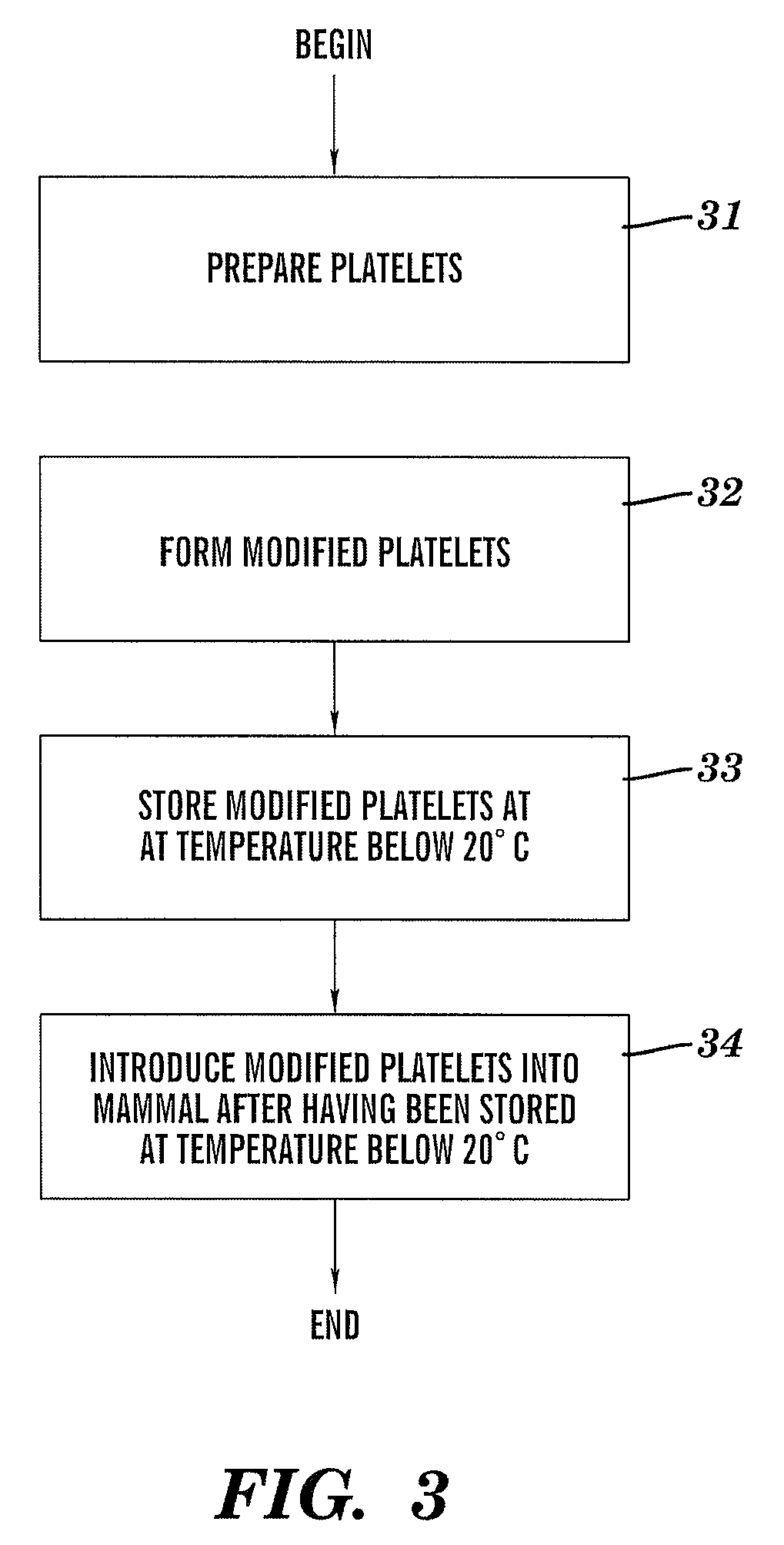Cold storage of modified platelets
a technology of platelet and storage method, which is applied in the field of storage and using platelets, can solve the problems of structural injury, irreversible damage of platelets, abnormal bleeding, etc., and achieve the effect of acceptable platelet functionality and viability
- Summary
- Abstract
- Description
- Claims
- Application Information
AI Technical Summary
Benefits of technology
Problems solved by technology
Method used
Image
Examples
Embodiment Construction
[0027]The present invention provides a method, system, and structure for safely storing modified platelets at temperatures of less than 20° C. subsequent to formation of the modified platelets. The modified platelets are formed by covalent modification of the platelet membrane of the platelets with polyethylene glycol (“PEG”) or derivatives of poly(ethylene glycol) such as methoxypolyethylene glycol (“mPEG”). The covalent modification of the platelets with PEG or a PEG-derivative blocks the adverse effects of the platelet cold storage lesion while maintaining acceptable platelet function and viability (e.g., normal platelet function and viability). Normal in vitro platelet functionality is defined as full aggregation of platelets in plasma in response to 2 IU / mL thrombin (75-100% increase in light transmission measured by platelet aggregometry test, as illustrated in portion 72 of FIG. 8, described infra) and the potential to recover from mild stress, i.e., recover resting morpholog...
PUM
 Login to View More
Login to View More Abstract
Description
Claims
Application Information
 Login to View More
Login to View More - R&D
- Intellectual Property
- Life Sciences
- Materials
- Tech Scout
- Unparalleled Data Quality
- Higher Quality Content
- 60% Fewer Hallucinations
Browse by: Latest US Patents, China's latest patents, Technical Efficacy Thesaurus, Application Domain, Technology Topic, Popular Technical Reports.
© 2025 PatSnap. All rights reserved.Legal|Privacy policy|Modern Slavery Act Transparency Statement|Sitemap|About US| Contact US: help@patsnap.com



